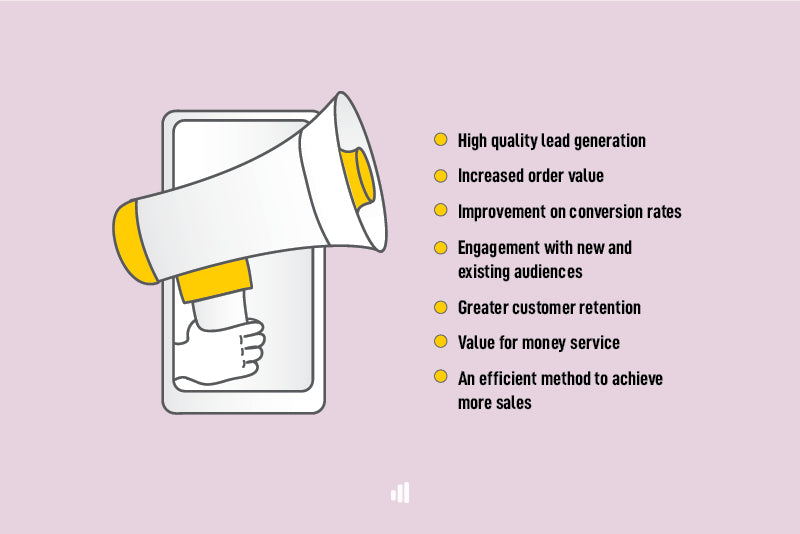When it comes to personalised marketing strategies, there’s a fine line between being attentive and intrusive – so as a business, how do you get it right?
Have you ever searched for a product on Google, only to find the same brand popping up all over your social media channels in the same 24 hours? While retargeting is a form of personalised marketing, it can easily get consumers offside if you are going “too hard, too fast”.

What Is Personalised Marketing
Broadly speaking, personalised marketing is when a brand deploys specific marketing measures based on a consumer’s interests, age, gender, demographics or even their name. Instead of crafting a generic advertisement, a business creates a “persona” from the data willingly (or unwittingly) supplied to them via social media, cookies and even their IP address.
When it comes to personalised marketing, it is often the lack of transparency that gets consumers offside – and as a brand or business, navigating this can be difficult. In fact, almost two thirds of marketing professionals reported that data driven personalisation was the most difficult digital marketing strategy to execute.
However, when actioned appropriately, personalised marketing can provide tangible results that are relatively easy to measure, so don’t give it up just yet. Just a handful of the many benefits associated with the practice can include –
- High quality lead generation
- Increased order value
- Improvement on conversion rates
- Engagement with new and existing audiences
- Greater customer retention
- Value for money service
- An efficient method to achieve more sales
Do’s And Don’ts Of Personalised Marketing
If you’re considering personalised marketing as a way to kick the above goals for your brand or business, how do you get it right?
Do: Get Consent – The quickest way to alienate yourself from potential customers is by weaponsing data that they didn’t agree to share. Ensure your website has a clear policy surrounding the use of cookies, consumer information and even e-newsletters.
Do: Email Is Your Friend – Personalised marketing is about so much more than adding a first name into the body of an email. Don’t forget about the subject line, and try to incorporate information that is actually of use to them such as product updates or location openings.
Do: Segment Your Audience – The process of personalised marketing can be overwhelming if you’re trying to tackle your customers individually. Instead, try to segregate them into groups using demographic data, spending levels, product interests and overall buying patterns.
Do: Aim For Retention – Once you have the attention of a new or existing customer, the aim of the game is to keep it. Think of how Netflix works – “what’s next” or “you might like” – and use this suggestion based strategy on your website product pages or blogs.

Don’t: Make Personalisation Generic – When it comes to personalised marketing strategies, if you’re not going to do it properly – don’t do it at all. A little effort is required if you wish to represent yourself as attentive and specific as opposed to hollow.
Don’t: Forget Your Database – Do you have a back up plan if you’re automating based on data that isn’t there? Keep on top of your customer database with things like emails, ages and even names to avoid the dreaded “Hi there <FIRSTNAME>” faux paux happening to you.
Don’t: Use It Every Time – If you try to personalise every single marketing effort, it’s going to wear you out – and it’s also not necessary. Customisation isn’t required for big events such as sales, so ensure you use it with quality over quantity in mind.
Don’t: Make Assumptions – Personalised marketing can go south very quickly if you’re assuming things about your customers, so make sure that you’re only going off the information that’s been provided – especially when it comes to age, gender and ethnic background.
How To Start With Personalised Marketing
The problem that many businesses face when it comes to producing great digital marketing in any form, is that they may not have the time, energy or resources to do so – but avoiding content marketing may actually be doing their brand a disservice.
Thankfully here at Content Hive, producing top quality video and digital content is exactly what we do best. We have itemised a list of digital content services, and allocated credits next to each of these. This means that each month, you can use your credits with us to produce digital content such as social media posts, blog articles, videos and even animated Instagram stories.
We believe that this model means we can produce high quality content in faster than normal delivery times. It also means that because you have a monthly credit, you are going to want to make sure you use these up – and so do we – meaning that your digital content is always consistent.
If you aren’t quite sure where to start on your digital marketing journey and would like to speak to a professional, why not book in a free discovery call with us at Content Hive today to discuss how we can get your brand buzzing online.


